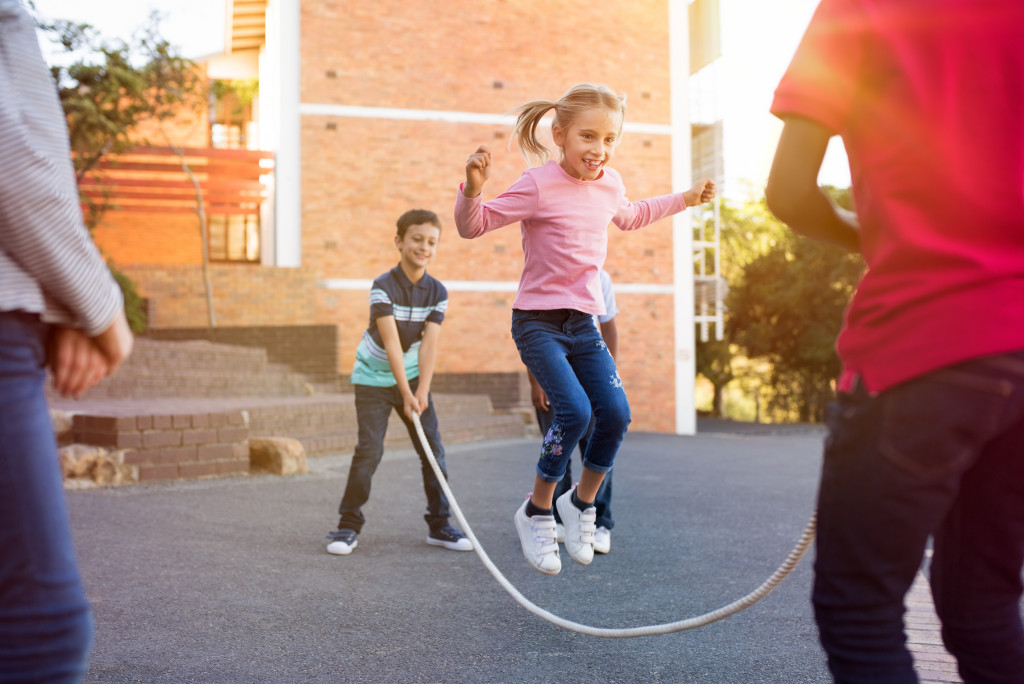Regarding energy, kids often seem to have so much more than adults. This can be seen in their physical and mental capacities, as they can often go longer without sleep or stay engaged in a task for more extended periods. But why is this exactly? While no single answer can cover all cases for every individual, some scientific evidence highlights the differences between children and adults regarding energy levels.
According to a study by the National Sleep Foundation, adults need around 7-9 hours of sleep per night. On the other hand, kids require an average of 10-12 hours of sleep per night at different stages of development throughout childhood. This is because, during sleep, the body produces growth hormones that help children develop physically.
It’s not just sleeping habits that give kids an edge over adults. A study conducted by Stanford University found that preschoolers aged 3-5 had more cognitive control over their attention than their adult counterparts aged 18-30 while completing a task on a computer screen, assessing cognitive performance with working memory capacity (task switching). This means that preschoolers were better able to focus on one given task and switch attention quickly when prompted than adults, who took longer and had poorer performance overall due to being distracted by irrelevant stimuli presented during the task-switching period.
As a parent, it can be tiring to have kids running around the house with you having to watch their energy levels. But it also presents an opportunity to guide and help them manage their energy better. Social environments provide the best areas for your kid’s playful behavior, making these establishments ideal.
Parks and Playgrounds

Parks and playgrounds are ideal environments for children to release their energy in a safe, fun, and engaging way. Parks and playgrounds provide a wide range of physical activities that allow children to explore their natural curiosity while challenging them enough to let their bodies and minds develop at their own pace.
In parks, kids can climb trees, swing, slide, play catch with friends or family, bike around the park paths, or jump rope. These types of activities not only help children burn off energy but also teach them about balance and coordination. Playing tag or running around games such as hide-and-seek in parks also helps kids learn about risk management and strategic thinking as they strategize how to win the game without getting caught.
Playgrounds offer much more than physical exercise, with various interactive components that make playtime educational and entertaining. Playground equipment like climbing walls, see-saws, merry-go-rounds, and swing sets require basic problem-solving skills, which help encourage critical thinking among children. Additionally, non-motorized toys like sandboxes let young ones use their imaginations while building castles or playing pretend with others.
However, parents must supervise their kids because parks and playgrounds possess safety hazards, including the following:
Unmaintained playground equipment
Overuse and poor maintenance can result in playground equipment becoming unstable or having sharp edges that can hurt kids.
Lack of adult supervision
It’s essential to ensure that an adult constantly supervises young children in parks and playgrounds, as they may not be aware of the dangers, like child predators.
Muggings and Thefts
Muggings and thefts are common in some areas, so parents should be alert when taking their kids out to play in public parks and playgrounds.
Uneven surfaces
Kids can suffer from injuries caused by tripping on uneven surfaces, such as gravel or broken tiles.
Sensory Play Areas

If you want to copy the environment of a playground but it a much safer setting, you can visit a sensory play area for toddlers and kids, like a trampoline park or soft-play center. These indoor play areas are designed with safety as the top priority, providing children with a safe yet stimulating environment for physical activity and exploration.
Sensory parks offer many activities to help your child burn off energy and develop their motor skills, including jumping on trampolines and running through mazes. Soft-play centers provide an even more interactive experience. With slides, swings, and other equipment all made of foam padding, they guarantee that kids won’t get injured while letting them expend their energy in a fun way.
Indoor theme parks also make excellent options to keep your kid entertained while preventing them from getting hurt. Roller coasters, carousels, and other rides provide an exciting atmosphere where your child can engage in physical activities while still being monitored by you and other adults.
Backyard Activities
Bringing the playground to your backyard is also an option, offering children the opportunity to get creative while still staying under adult supervision. You can create a play area in your backyard by setting up swings, slides, climbing walls, and other toys that will provide hours of entertainment for kids while keeping them safe from potential hazards they may encounter in public parks and playgrounds.
Final Thoughts
As parents, it’s essential to find ways to help our children channel their energy into healthy physical activities that will not only help them burn off energy but also teach them how to manage their emotions, build relationships with others, and develop critical thinking skills. With the right combination of establishments, parental guidance and supervision are vital for helping children stay active without putting themselves in harm’s way.


